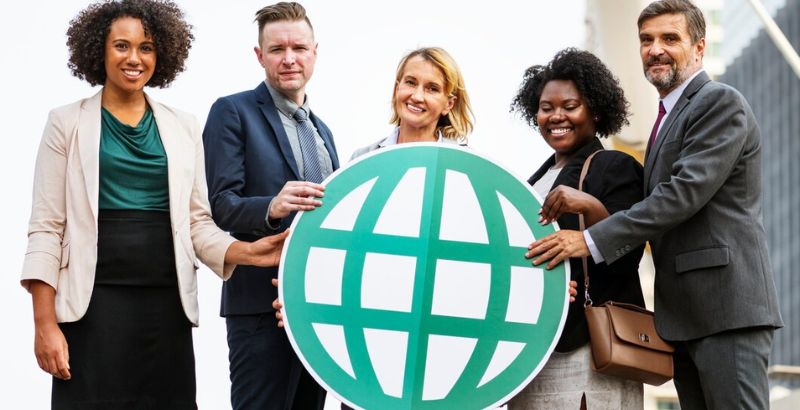Bridging the Knowledge Divide: An overview of the open access movement in developing regions

Open access movement has gained significant traction globally over the years. Since its inception, open science advocates have been aiming to build a more inclusive and dynamic community by promoting this movement in underrepresented regions.
Access to Research Outputs: Challenges faced by the developing countries
Around three decades ago, when the electronic publishing system was not mainstream, researchers from the developing countries had to wait for months to access research papers published by the top journals in developed countries. Their access was further limited by the availability of subscription-based journals. However, this scenario slowly transformed when digitalization rose in the early 2000s. But, researchers still had to pay journal subscription fees or site license fee to access the publications. According to a survey finding, the annual library subscription fee for accessing papers in Science and Technology was around $1,200 in the year 2000.
As a result, to ensure equitable opportunities for researchers worldwide, various initiatives and institutes were established. These include:
- arXivorg (1991)
- Scholarly Publishing and Academic Resources Coalition (SPARC) (late 1990s)
- PubMed Central (2000)
- Public Library of Science (PLoS) (2000)
- Budapest Open Access Initiative (2002)
- Berlin Declaration on Open Access to Knowledge (2004)
- Declaration on Access to Research Data from Public Funding (2004)
While these movements and institutes accelerated the adoption of open science in developed countries, their success in developing countries had been slower. This was majorly due to challenges like financial constraints, technological limitations, and infrastructural barriers.
Addressing these challenges requires a deep understanding of the unique issues faced by the stakeholders from these regions. Here is a quick overview of the major constraints faced by underrepresented regions that prevent them from embracing the open access movement.
Challenges Faced by Underrepresented Regions
Africa:
- Lack of Digital Infrastructure: One of the biggest issues faced by this region is the lack of digital infrastructure. A recent report published by the World Bank Group showed that only 37% of the Sub-Saharan African population used internet. This is significantly lower than the global average, which stands at 67%. In this digital era, reduced access to internet acts as a major barrier preventing researchers from accessing the global research output.
- Funding Challenges: Another problem that needs attention is the uncertainty about funding. A study reported that Africa’s contribution to global research is less than 1%. Furthermore, the researchers also struggle in paying the skyrocketing article processing charges (APCs) mandated by the high-end journals.
- Accessibility to Open Access Journals: A study in 2021 reported that researchers from Sub-Saharan Africa prefer to publish their manuscripts in high-quality journals that are behind paywalls because most of the open access journals accessible to them have lower impact factors. This highlights the need to improve the quality of the available open access journals to drive the researchers’ engagement with the open access platforms.
Latin America:
- Language Barriers: A recent study findings reported that only 13% of the SCOPUS-indexed Latin American journals use English as the language of publication. This suggests an increasing need to shift from local languages, such as Spanish and Portuguese, to enhance the global visibility of Latin American researchers.
- Article Processing Charges: Latin America also suffers from the “pay to publish” models, which charge high APCs. A recent survey highlighted that APCs for fully open access publications increased by approximately 10% in the year 2023-24.
Asia:
- Uneven Progress: While a majority of Asian countries have open access policies and repositories, some countries lack national level policies supporting open access. This has affected the consistent and sustained progress of open access publishing in this region.
- Predatory Journals: A recent study documented that approximately 30.38% of predatory journals are published in Asia. This is a growing concern, as these journals charge high APCs to researchers while failing to provide the necessary editorial feedback that improves the quality of the manuscripts.
Middle-east Countries:
- Research Funding: According to a UNESCO report, most Arab states invest less than 0.5% of their GDP in research and development. Such financial barriers prevent researchers from these regions in fully embracing the open access movement.
- Reduced Popularity of Open Access: Only 12 countries out of the 22 Arab states have open access publishers. This significant disparity calls for the need to establish multiple open access journals and policies across the region to drive an even growth of the open access movement in this region.
Need for Streamlining Open Access Initiatives in Developing Countries

Various initiatives and policy changes, such as the ones mentioned above, have set the wheels of change in motion. According to a recent article, almost half of the global research output is now available online and is freely accessible. This is in contrast to the state that was prevalent in 2010 where only 30% of the published articles were openly accessible.
While the rising trends in the open access movement seems promising, incorporating DEI principles in such movements have a long way to go. This is not only in terms of its conventional sense of providing equitable opportunities to underrepresented regions, but also in addressing the deeply penetrated structural and systemic barriers in the way STM industry functions in these regions. What are your thoughts on the current status of the open access movement in developing countries? Share your thoughts in the comment box below or write an opinion-piece and submit it to Enago Academy’s Open Platform!






 Increasing Visibility
Increasing Visibility









